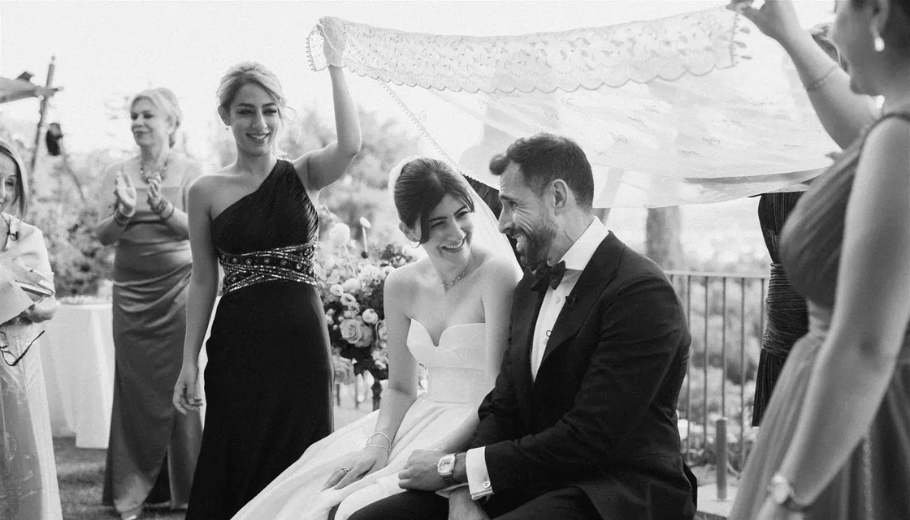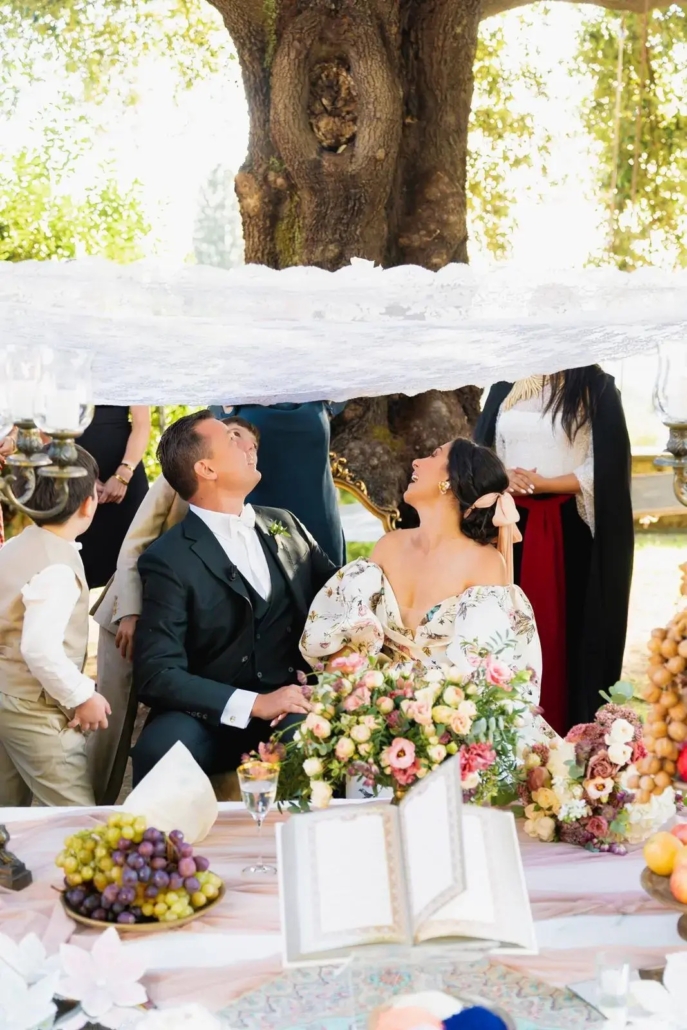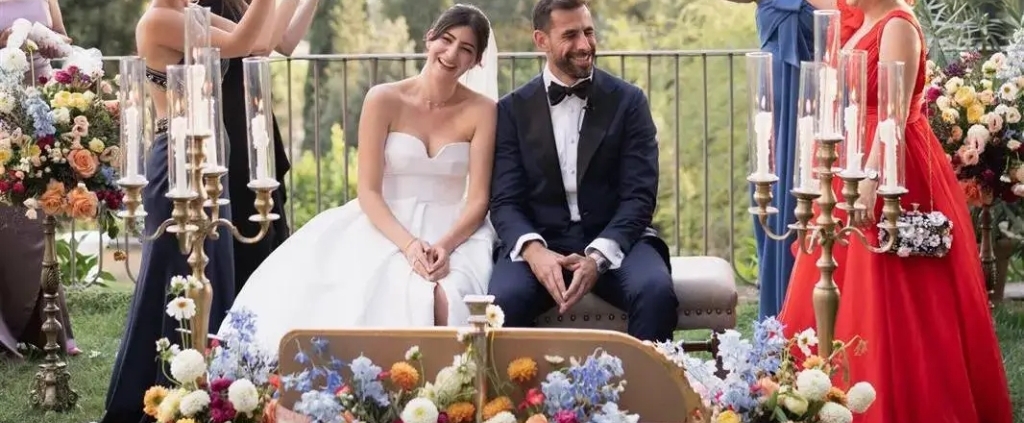Muslim Wedding: Traditions, Ceremony and Rituals
In the rich tapestry of cultural diversity, Muslim wedding traditions stand out as vibrant and deeply meaningful celebrations, weaving together centuries-old customs with the essence of Islamic teachings.
These weddings are not just a union of two individuals but a celebration that extends beyond the couple, encompassing family, community, and the shared values of faith.
Rooted in the teachings of Islam, Muslim weddings are a beautiful amalgamation of spiritual rituals, joyous festivities, and a profound commitment to building a life together in accordance with the principles of the Quran.
Join us as we explore the intricacies and beauty of Muslim wedding traditions, discovering the timeless customs that make these celebrations both unique and universally cherished.
The Main Muslim Ceremonies
There are two main events that are always a part of the Muslim wedding as others may be dictated more by the culture and region the wedding is taking place in: Nikkah and Walima.
What is a Nikkah Ceremony?
The Nikkah Ceremony is the basis of the wedding when both parties (separately or together) consent to the marriage and sign a legal contract known as the nikkahnama. This ritual can take place in a mosque with a cleric presiding or as part of a larger ceremony or event known as the Barat. The Nikkah is typically not that grand unless it is included at the beginning of a bigger event such as the Barat.
The Nikkah Ceremony is a singularly essential event as the marriage cannot occur unless it meets this criteria. It involves a small congregation and the wedding is legalized in the presence of witnesses.
Music may follow after a Nikkah but never during it, and segregation of the sexes usually does not happen in more modern families although the bride is sometimes asked for her consent away from the crowd in a separate room before the groom is asked in front of the congregation.
‘Qabool hai’ is said 3 times by both bride and groom to indicate consent and don’t be surprised if you see sweets or cupcakes with ‘Qabool hai’ toppers! After the Nikkah it is customary that a small bag or box of sweets is given to every guest as a small gift.
The rituals of Nikkah ceremony
A proposal is made by either the bride or groom, although the latter is usually the one who initiates the match. This may be done days or even months before the Nikkah takes place and smaller home events such as a ‘baat pakki’ or ‘dua-e-khair’ may take place to celebrate this.
The latter and the former are cultural equivalents of a modern-day engagement, but they only indicate a match has been formed, not that a marriage has taken place yet.
A Muslim cleric will have legal paperwork regarding the formalization of the marriage, which both parties must sign, and the bride is usually asked for her consent first.
The bride is encouraged to read the nikkahnama or formal marriage document (by the way, read what documents are needed to get married in Italy), and she may add conditions within the permissible range granted by the religion.
There must never be any indication of force towards the bride, as her refusal nullifies the proceedings immediately. However, her remaining silent counts as acceptance, while the groom has to proclaim his intention to all those present.
The ‘Haq Mehr’ is a wedding gift the groom must give his bride during the Nikkah Ceremony. It is usually in the form of money or gold but can also be other assets such as a house or other property.
The bride can make demands but is encouraged not to exceed her husband’s income or reasonable estimation of his current assets. The ‘Haq Mehr’ indicates good faith and the willingness of the groom to always provide for his wife and look after her financially.
There isn’t a concept of wedding vows in a Nikkah ceremony, but the religious cleric will take this opportunity to share some wisdom about the sanctity of marriage and may give a sermon about the ideal relationship between a husband and wife.
Dinner or lunch usually follows, and the venue will depend on how many people are invited, as Nikkah ceremonies can be done in an intimate gathering at one’s house as well.
Going to plan the Luxury Muslim or Arab wedding of your dream? Get in touch!
What is Walima Dinner?
The second main ceremony without which the marriage cannot be considered complete is a Walima dinner. The Walima is a religious obligation on the groom and is a dinner given to announce his marriage It is usually the last event in the marriage series but may also just be the second as some Muslims only do the minimum number of events.

Muslim Wedding Attire
The Muslim wedding attire is purely a cultural undertaking, so it depends on where the bride and groom are from, whether they hail from South Asia, Africa, an Arab state or anywhere else.
A Muslim bride usually wears red and gold but may even wear a white lace dress, as there is no strict obligation regarding the outfit. The attire is usually modest, however, with a fully covered dress or ‘peshwas’, which is a flowy full-length dress.
In Arab culture, the bride may have her face covered and wear a very modest dress. In South Asia, ‘lehengas’ and ‘gararas’, which are essentially large skirts, are worn with blouses. In other parts of Asia, a wedding ‘sari’ is worn by Muslim brides along with brides of other religions as it is a culturally significant garment.
If you are attending a Muslim wedding as a guest, be sure to wear conservative clothing to fit right in and try a traditional ‘gotay ka jora’, which is a type of shiny lace that is put on formal clothing in South Asia.
While brides do normally cover their heads and wear jewelry like a ‘maatha patti’, ‘jhumar’ or ‘teeka’, which is a stunning traditional version of a tiara, guests do not need to cover their head unless the gathering seems to require it or the Nikkah is being carried out in a rural setting.
Always check with the couple about small details like this whenever in doubt!
Wedding Traditions For The Arab Culture
The Arab and South Asian cultures boast the greatest influence of Islam, and that influence trickles down into weddings. Here are some of the Arab wedding traditions commonly practiced in predominantly Arab Muslim weddings.
Tolbe is carried out before the Nikkah takes place. It is just a fancy way of sending one’s proposal, and it is done by the groom. A prayer or ‘dua’ follows, in which everyone sends blessings on the couple and prays for their everlasting union.
The Nikkah and setting of the ‘Haq Mehr’ are common to all Muslim weddings around the globe, and an Arab wedding is no different. Much like the groom’s elaborate entry on horseback in South Asia, in Arab weddings, there is a special (drumroll please) entry by the bride and groom to the venue of their reception called a zaffe.
Expect drummers, singers, dancers and plenty of visual entertainment. Arab Muslim weddings do have hired singers and dancers, too, if the couple can afford it, and it is called Dabke, which stands for folk dancing and singing.
Barmet-al-Aroos is the couple’s wedding exit, and there is usually a lot of cheering and noise. Family members are known for driving or accompanying the bride and groom to their hotel or other destination.
GET IN TOUCH
Ready to plan your Muslim
Wedding in Italy?
South Asian Muslim Weddings
South Asian weddings are culturally high-budget and extremely elaborate events, and apart from isolated cases, families usually want the festivities to go on as long as possible.
After the initial engagement and in the days leading up to the wedding, there are multiple ‘Dholkis’, which are home events when relatives gather at the house where a son or daughter is getting married, sing songs, and dance.
There can be as many as ten Dholki events, although some families have a whole month of these informal events, and the wedding house is almost always decked out in fairy lights and other decorations, so the neighbors offer congratulations.
Ghardoli or Haldi
Events like Gharoli or Haldi are also much loved pre-wedding events, with the latter simply being an event in which people gather to smear a mixture of turmeric called Ubtan on the bride and groom as it is supposed to make their skin glow before the wedding. Women and young girls apply henna to their hands during this time so the color is rich and vibrant for the ‘Mehindi’ event ahead.
Mayun
A Mayun is a similar event to the Haldi and is usually done in the bride’s home. The Mehindi is a favorite amongst young people since this is the event in the wedding series that has choreographed or freestyle dancing and singing to popular folk and movie songs. The friends and loved ones of couples rehearse choreography sometimes for months before the wedding to make sure they have it perfect for the big day!
The Baraat
The Baraat comes after the Mehindi, and it is basically a wedding reception that signifies the groom is coming to get the bride and take her home.
The groom typically comes with a lot of fanfare and may even come on horseback with a large crowd of relatives and extended family.
At the very least, there will be a convoy of cars headed in one row to the venue, which is the groom’s wedding party. The wedding car is driven by the groom or his father or brother and is always decked out heavily in flowers and ribbons for the ‘Rukhsati.’
Related: How to Easily Plan Your Luxury Muslim Wedding in Italy
‘Dood Pilai’
The Baraat has many traditions of its own that are influenced a great deal by Indian culture and less by Islamic belief and thought. ‘Dood Pilai’ is a tradition in which the girl’s mother, sister or cousins will present a decorated glass of pure milk to the groom, who sips on it and then gives it to his bride to drink from.
It is supposed to signify health, happiness and abundance, such as when the bride throws rice behind her as she departs the venue to signify the abundance of sustenance in her new life.
‘Joota Chupai’
‘Joota Chupai’ is a fun little sub-tradition during the Baraat in which the bride’s sister, cousins or friends (or all of them) will steal the groom’s shoe and require a certain sum of money to return it. He definitely cannot leave the venue without it, so he negotiates and ultimately acquiesces!
Rukhsati
The Rukhsati is a bittersweet moment for everyone at the wedding since the bride will leave her childhood home behind for her husband’s home.
The bride hugs everyone goodbye, and there are usually a lot of tears all around. Many old folk songs in the region center around a bride leaving her home after marriage and how that is like an exotic bird leaving her nest never to return.
The elders of a family hold special importance during weddings and are consulted at every turn, and a bride must say goodbye to all her elders before she departs with her husband.
In many cases, the couple stays at a hotel, but when they do go home, you can expect fairy lights, fireworks, flower petals everywhere and candles. In some families, a goat may be sacrificed upon the couple’s arrival to ward off the evil eye.

Muslim Wedding FAQs
I. Do you kiss the bride at a Muslim wedding?
The bride and groom are not allowed to be intimate in any way before the Nikkah has taken place. Even afterwards, it is unusual to see the groom kissing the bride or any similar act. Muslim weddings tend to be relatively conservative events in that respect.
II. Who pays for a Muslim Wedding?
According to Islamic tradition, most of the expenses related to the wedding are supposed to be taken care of by the groom, but in the vast majority of South Asian weddings, the father of the bride undertakes a lot of the expenses relating to the bridal trousseau and wedding events.
The boy pays the Haq Mehr, creates a set of gifts called the ‘Bari’, which is a trousseau from him and his family for the girl and hosts the Walima reception.
III. Do you give gifts at a Muslim wedding?
Gifts are absolutely given at a Muslim wedding the same as any other, although in general, most people prefer to give an envelope of cash called the ‘salami.’ People may also give flowers to the bride and groom and lots of prayers and well wishes!
IV. What should a non-Muslim wear to a Muslim wedding?
Modest clothing such as long shirts, pants and dresses are generally encouraged, and it is not necessary to cover one’s head. Men may wear traditional attire like a shalwar kameez or simply a dress shirt with pants or a tuxedo or suit.
V. What is a Muslim wedding dress called?
There are many types of dresses worn at Muslim weddings (some may even borrow heavily from the classic English and American white dress). For example, in the South Asian context, lehenga and choli, which are blouses and long flowing skirts with plenty of work done by hand, are popular choices.
Work like ‘Tilla Dapka’ is passed down by artisans over generations and is done entirely by hand over a period of a few months. Ghararas, which are long dresses tightened at the knees, are popular choices, too, and they are paired with a long shirt and a dupatta on the head, which is a heavier form of the veil.



